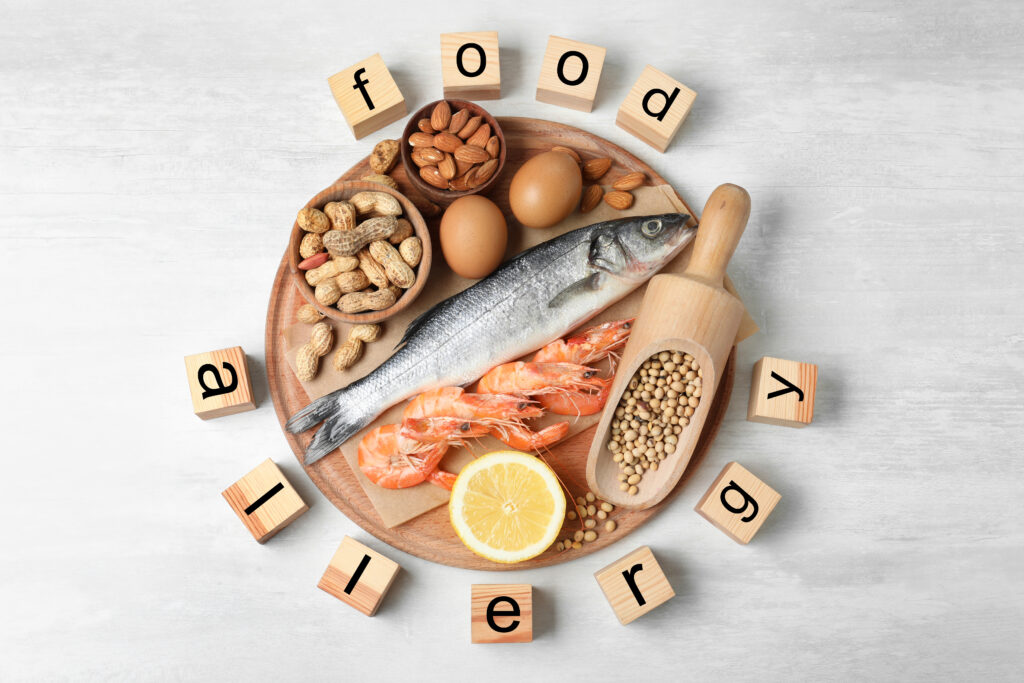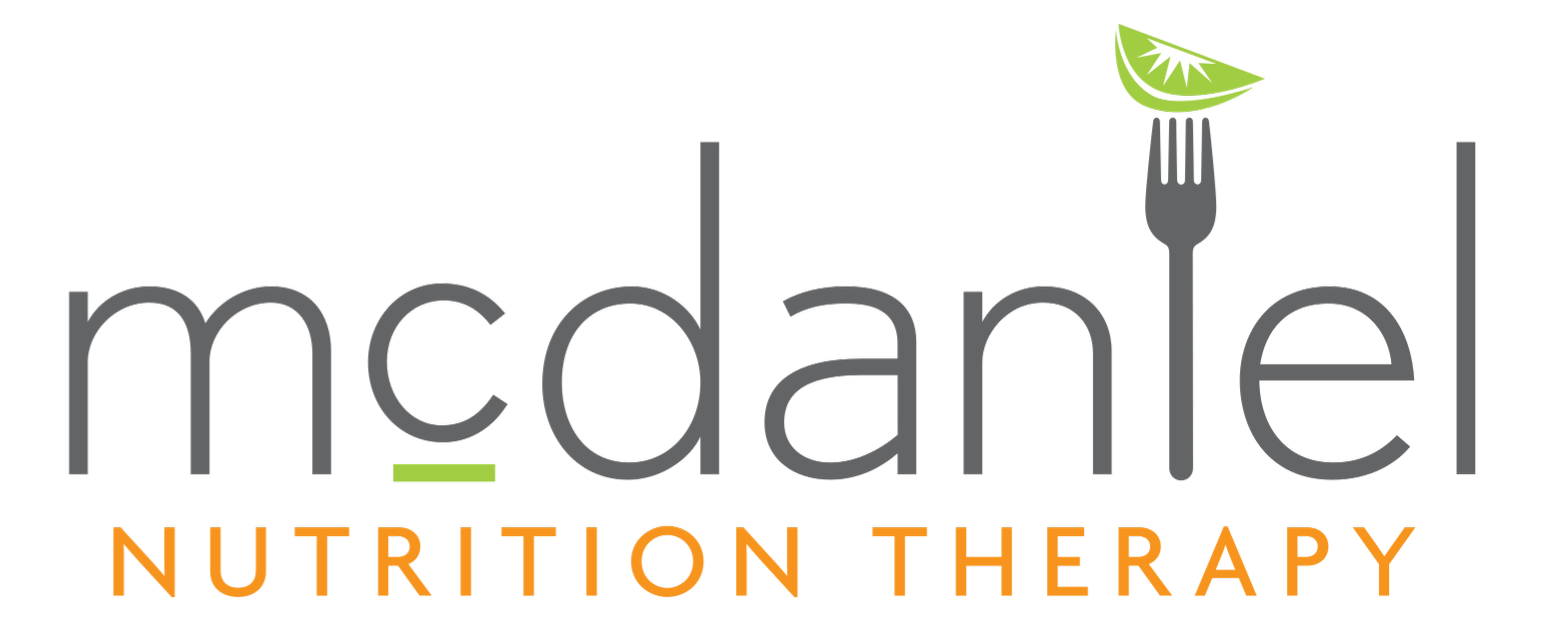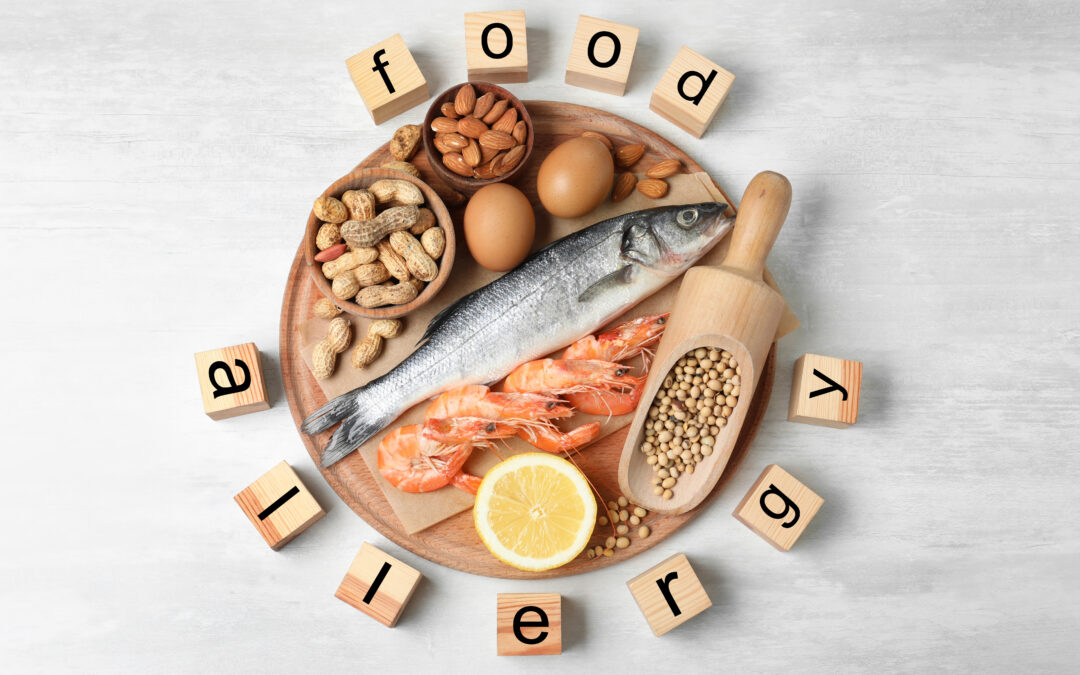Food allergies and sensitivities (or intolerances) are increasingly common. You’ve heard of nut-free schools and gluten-free foods, and yes, some people truly need to avoid even the tiniest traces of these foods. In fact, millions of Americans experience allergic reactions to foods every year. While most allergic reactions are mild, they can be life-threatening. In some cases, they may need emergency treatment or hospitalization.
Where do food allergies and sensitivities come from? How do we know whether our symptoms are from an allergy or sensitivity? What are the best ways to prevent, treat, and live with them? Keep reading to find all the essential answers in this blog post.

Food Allergies vs. Sensitivities
Food allergies are abnormal immune system responses to foods. This happens when the immune system mistakes a non-harmful food, like peanuts, for a serious invader and reacts to it as if it’s dangerous.
Allergies are often first noticed during childhood but they can develop at any age and may last for a lifetime. It’s possible for food allergies to intensify each time you eat the offending food. So, if you have ANY allergic reaction to a food, it’s important to speak with your healthcare provider. You may need to get allergy testing or carry emergency medication.
It’s unclear exactly where food allergies come from. Research shows that they could partly be genetic, but your gut microbiome may also play a role. New studies show that introducing young children to foods with common allergens may reduce their chances of developing serious allergies. This is definitely something to talk to your pediatrician about before jumping in.
Unfortunately, there is no cure for food allergies but you can prevent reactions. Proteins in offending foods trigger allergic reactions. There is a short list of foods that account for the vast majority of food allergies. Because these are so common, the FDA requires that they are labeled on all packaged food in the US.
Big 8 Allergens:
-
Peanuts
-
Tree nuts (e.g., almonds, walnuts, pecans)
-
Fish (e.g., cod, bass, flounder)
-
Shellfish (e.g., crab, lobster, shrimp)
-
Eggs
-
Milk
-
Wheat
-
Soy
Many food sensitivities or intolerances are often mistaken for allergies. Food sensitivities or intolerances can causes a wide range of symptoms. But, the main difference is the involvement of the immune system. In food allergies, the immune system is reacting to the food. In food sensitivities, the digestive system is reacting to the food.
Common Food Allergies and Intolerances
There are several different types of food allergies and sensitivities. Here is a short list of the most common reactions.
Anaphylaxis or anaphylactic shock
This is a very fast, life-threatening reaction when exposed to specific foods. Symptoms include sneezing, coughing, itching, hives, swelling, blood pressure drop, abdominal pain, dizziness, tightness in the throat, and shortness of breath. The main treatment for an anaphylactic reaction is an epinephrine auto-injector and calling 9-1-1. Avoid foods that cause this reaction.
Oral allergy syndrome or Pollen-food allergy syndrome
Oral allergy syndrome is associated with symptoms such as rash, itching, sneezing, and swelling occur around the mouth, lips, and tongue. Raw apples, bananas, cherries, kiwis, peaches, celery, tomatoes, potatoes, melons, and hazelnuts trigger this reaction. This type of allergic reaction is not life-threatening and is common among those who are also allergic to grass and ragweed pollen. Cooking the fruit or vegetable often reduces the symptoms.
Eosinophilic Esophagitis
Heartburn-like symptoms, nausea, vomiting, abdominal pain, or difficulty swallowing after eating certain foods may be eosinophilic esophagitis associated with food allergies. If this happens, it’s important to speak with your healthcare provider to see if you should get tested for allergies or need medications. Avoiding foods that cause this reaction is key.
Lactose Intolerance
Lactose is a sugar found in milk that can cause gas to build up in the gastrointestinal [digestive/GI] tract. This is not an allergy, but rather an inability to digest it. Lactose is a two-part sugar molecule that needs the enzyme lactase to break it down. When someone does not have enough lactase in their digestive tract, lactose remains intact and causes abdominal pain, nausea, excess gas, bloating, and diarrhea.
Gluten Intolerance
Grains such as wheat, rye, and barley contain the gluten protein. Gluten intolerance involves the immune system, but is a different immune reaction than true allergy.
Living with Food Allergies and Sensitivities
The best way to deal with food allergies and sensitivities is to avoid those foods that cause reactions for you. Here are our best strategies for navigating food allergies.
Read food labels carefully.
To help you avoid foods that you react to, most pre-packaged foods must clearly identify if they contain any of the major food allergens.
Avoid cross contamination.
Wash your hands, surfaces, dishes, and utensils well to prevent accidental cross-contamination between offending foods and other foods.
Ask questions in restaurants.
If you’re eating out, confirm whether the meal is free from the food you’re allergic to before placing your order.
Don’t forget your cosmetics.
Food allergens are also added to certain medications and cosmetics, so check those labels or ask your pharmacist before purchasing.
Prepare for Anaphylaxis (if you have known food allergies)
If you experience an anaphylactic reaction, the FDA says that “Persons with a known food allergy who begin experiencing symptoms while, or after, eating a food should initiate treatment immediately, and go to a nearby emergency room if symptoms progress.”
If you have had a serious anaphylactic reaction, it’s important to carry an epinephrine auto-injector in case of accidental exposure. This is a lifesaving medication that can help maintain your blood pressure and restore your ability to breathe. If you think you need this, talk with your doctor.
If you believe that you may have a food allergy or sensitivity see your healthcare provided to discuss getting tested.
Final Thoughts
There are several different kinds and most are not serious or life-threatening, yet, they all cause unwelcome symptoms. The general recommendation is to avoid the offending food. This post contains several essential tips on how to handle food allergies and sensitivities.
If you believe you have a serious food allergy, see your healthcare provider as soon as possible. If you think you may be sensitive to certain foods, make an appointment with an MNT dietitian. We can help you navigate your allergy and help to build a healthy diet.
Still have questions, read this post that busts the most common myths about food allergies.

